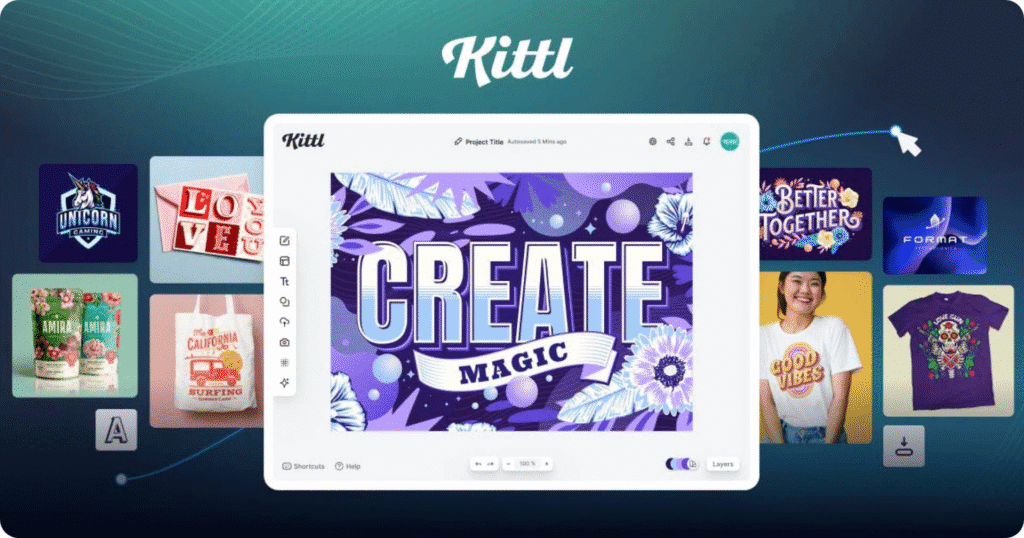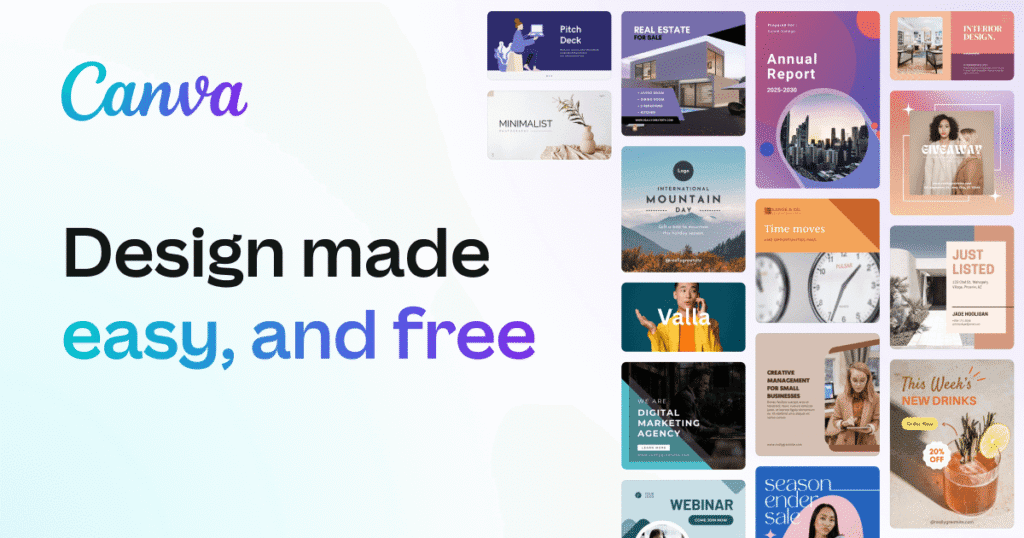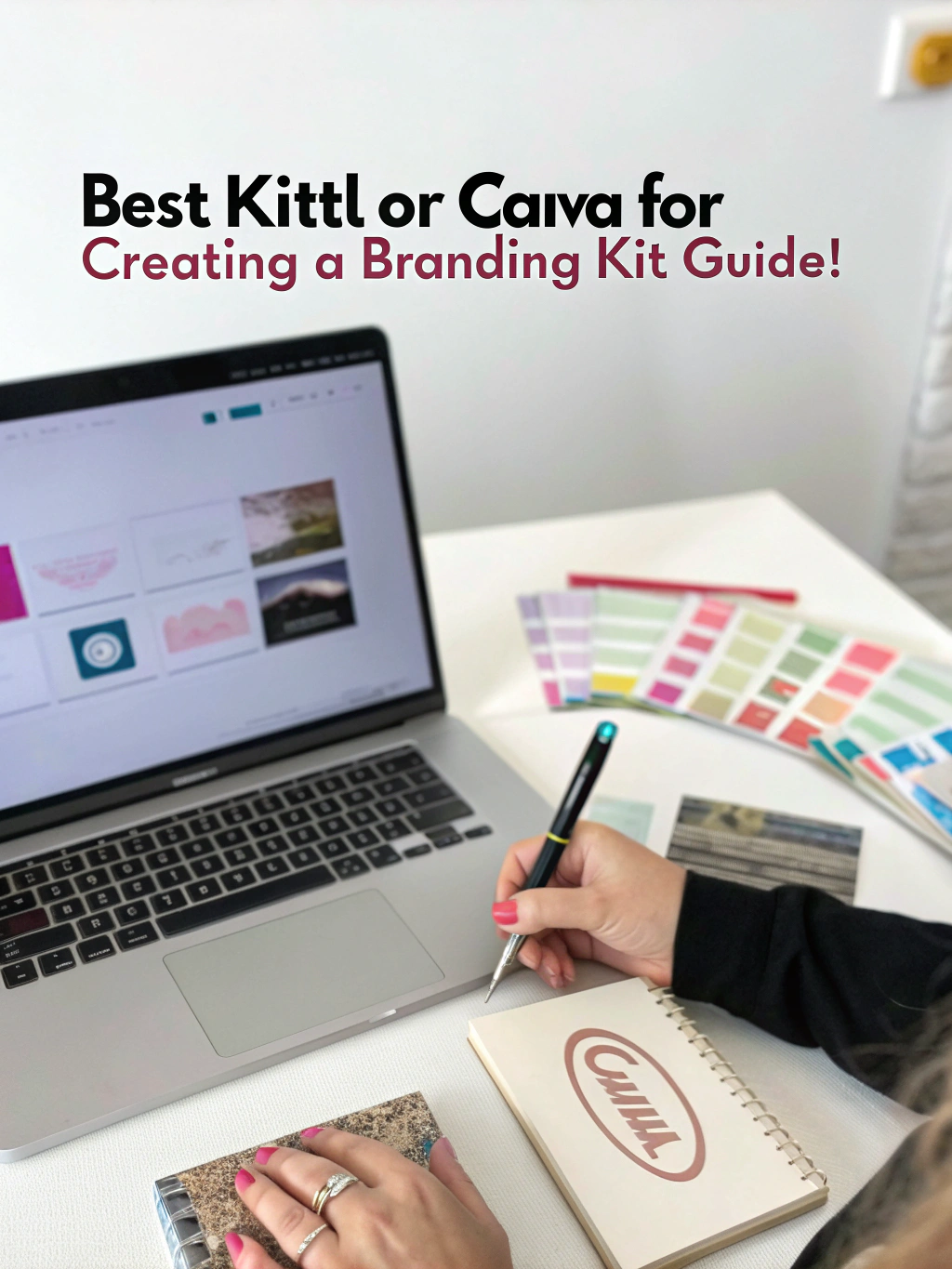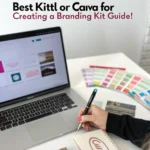Transforming Your Brand’s Visual Identity with Professional Design Tools
Are you staring at a blank screen, feeling overwhelmed by the thought of creating a cohesive brand identity? You’re not alone. Many entrepreneurs and small business owners struggle with the daunting task of developing professional branding materials without breaking the bank. Kittl or Canva for creating a branding kit could be the solution you’ve been searching for – but which platform best suits your specific needs?
I remember when I first started my design journey – hours wasted trying to create matching business cards, social media templates, and logos that actually looked professional. The frustration of piecing together a brand identity without professional design skills was real. But then I discovered how the right tools could transform this exhausting process into something actually enjoyable and effective.
In this comprehensive guide, I’ll walk you through 7 straightforward steps to create a stunning branding kit using either Kittl or Canva, helping you save precious time while achieving professional-looking results. Let’s dive in and transform your brand’s visual identity together!
Understanding Branding Kits: The Foundation of Visual Identity
Before we jump into the tools, let’s clarify what a branding kit actually includes. A complete branding kit creation typically consists of:
- Logo (primary and secondary versions)
- Color palette (primary and secondary colors)
- Typography system (heading and body fonts)
- Brand patterns and textures
- Social media templates
- Business cards and letterhead designs
- Email signatures
- Brand style guide
Having these elements consistently designed creates a cohesive visual identity that helps your audience instantly recognize your brand across different platforms and touchpoints.
Step 1: Choose Your Platform – Kittl vs. Canva Compared
The first crucial decision is selecting the right design platform. Let’s compare Kittl or Canva for creating a branding kit based on key factors:
Kittl: The Emerging Design Powerhouse

Strengths:
- Specialized in vintage and retro design aesthetics
- Advanced text effects and typography manipulation
- Powerful texture and 3D effects
- Distressing and aging tools for unique design treatments
- Clean interface with intuitive controls
Limitations:
- Smaller template library compared to Canva
- Newer platform with a smaller user community
- Limited free plan features
Canva: The All-in-One Design Solution

Strengths:
- Massive library of templates for every brand need
- Extensive free version functionality
- User-friendly drag-and-drop interface
- Robust team collaboration features
- Integrated content planner and scheduler
- Huge selection of stock photos and elements
Limitations:
- More limited advanced design effects
- Can be more challenging to create truly unique designs
- Sometimes slower to introduce cutting-edge design features
For beginners with no design experience, Canva typically offers the gentler learning curve. However, if you want unique, standout designs with advanced effects, Kittl design tools might be worth the slightly steeper learning curve.
Step 2: Define Your Brand’s Visual Strategy
Before opening any design software, take time to develop a clear visual strategy by answering these critical questions:
- Brand Personality: Is your brand playful or serious? Luxurious or accessible? Traditional or innovative?
- Target Audience: Who are you trying to appeal to? What visual styles resonate with them?
- Competitor Analysis: What visual elements do your competitors use? How can you differentiate?
- Industry Expectations: Are there visual conventions in your industry to follow or break?
- Brand Values: How can your visual identity reflect your core values and mission?
Document these insights in a simple brief that will guide all your design decisions. This preparation will save you countless hours of revisions and ensure your effective brand design truly represents your business.
Step 3: Create Your Logo – The Heart of Your Brand

Your logo serves as the cornerstone of your brand identity. Here’s how to approach logo creation on either platform:
In Canva:
- Navigate to the Logo section
- Select a template that matches your brand style
- Customize colors, fonts, and elements
- Create variations (horizontal, vertical, icon-only)
- Export in multiple formats (PNG, SVG, PDF)
In Kittl:
- Start with a blank canvas or template
- Utilize the advanced text effects (curves, shadows, 3D)
- Apply textures and distressing for unique treatments
- Create variations for different applications
- Export in vector formats for scalability
Pro Tip: In both tools, ensure your logo works in:
- Color and monochrome versions
- Large and small applications (billboard to favicon)
- Digital and print formats
This approach to logo design ensures versatility across all brand applications and creates a foundation for your entire Kittl or Canva for creating a branding kit journey.
Step 4: Develop Your Color Palette & Typography System
The color and font combinations you select will significantly impact your brand’s emotional connection with your audience.
Color Palette Creation
| Color Type | Purpose | Recommended Number |
|---|---|---|
| Primary Colors | Main brand identifiers | 1-2 colors |
| Secondary Colors | Supporting elements | 2-3 colors |
| Accent Colors | Highlights and CTAs | 1-2 colors |
| Neutrals | Backgrounds and text | 2-3 shades |
Both Canva and Kittl allow you to:
- Save your brand colors for consistent usage
- Extract colors from logos or images
- Access color harmony tools for complementary selections
Typography Selection
Select fonts that reflect your brand personality:
- Heading Font: Makes a statement (often serif or display fonts)
- Body Font: Ensures readability (typically sans-serif)
- Accent Font: Adds visual interest (used sparingly)
Canva Advantage: Access to thousands of fonts and easy font pairing suggestions
Kittl Advantage: More advanced text manipulation and vintage typography effects
Remember to document exact font names, weights, and sizing relationships for consistent application across all your DIY branding solutions.
Step 5: Design Your Essential Brand Assets
With your foundation established, it’s time to create the core brand assets using your Canva for branding or Kittl account:
Business Cards
- Create standard 3.5″ × 2″ designs
- Include logo, contact information, and social handles
- Maintain ample white space for readability
- Consider special finishes like spot gloss or embossing
Social Media Templates
- Design profile images and cover photos
- Create post templates for consistent brand presentation
- Develop story templates for quick content creation
- Build announcement frames for special promotions
Email Signature
- Include logo, name, position, and contact details
- Keep it mobile-friendly (not too image-heavy)
- Add clickable social icons
- Consider a call-to-action button
Presentation Templates
- Design custom slide layouts
- Create branded charts and graphs
- Develop icon systems for visual communication
- Establish text hierarchy for easy reading
Using templates within both platforms can significantly accelerate this process while maintaining professional brand identity consistency.
Step 6: Compile Your Brand Style Guide
A style guide serves as the instruction manual for your brand’s visual presentation. Create a comprehensive document that includes:
Logo Usage Guidelines
- Clear space requirements
- Minimum size specifications
- Approved and prohibited uses
Color Specifications
- HEX/RGB codes for digital
- CMYK values for print
- Pantone references (if applicable)
Typography Rules
- Font hierarchy examples
- Spacing and sizing relationships
- Headline and body text treatments
Visual Element Library
- Approved icons and illustrations
- Background patterns
- Photography style examples
Voice and Tone Guidelines
- Brand personality descriptors
- Writing style examples
- Vocabulary preferences
Both Canva and Kittl can be used to design beautiful style guide documents, though Canva’s presentation features make it particularly suitable for this task.
Step 7: Implement Time-Saving Branding Tips for Ongoing Management
Creating your branding kit is just the beginning. The real challenge is consistent implementation across all channels:
Set Up Brand Kits in Your Platform
- Both Canva and Kittl allow you to save brand assets for quick access
- Upload custom fonts and save color palettes
- Store logo variations for immediate use
Create Template Systems
- Develop modular templates that team members can easily customize
- Build content block libraries for quick assembly
- Establish locked elements to prevent brand dilution
Implement Naming Conventions
- Create consistent file naming systems
- Organize assets in logical folder structures
- Tag templates with relevant keywords
Schedule Regular Brand Audits
- Review all touch points quarterly
- Ensure consistent implementation
- Update assets as your brand evolves
These systems transform Kittl or Canva for creating a branding kit from a one-time project into an ongoing brand management solution.
Conclusion: Your Brand’s Visual Future
Creating a comprehensive branding kit doesn’t have to be intimidating or expensive. By leveraging the power of Kittl or Canva, you can develop professional-looking brand assets that build recognition and trust with your audience.
Remember that your brand identity should evolve alongside your business. Return to these steps periodically to ensure your visual presentation continues to accurately represent your brand’s values and resonates with your target audience.
Whether you choose Kittl’s unique effects or Canva’s user-friendly interface, the most important factor is consistency in application. Your audience will come to recognize and trust your brand through repeated exposure to cohesive visual elements across all touchpoints.
Which platform will you choose for your branding journey? The answer depends on your specific design needs, technical comfort, and the unique personality of your brand.
FAQ About Kittl or Canva for Creating a Branding Kit
Is Canva or Kittl better for complete beginners?
Canva generally offers a more intuitive starting point for absolute beginners with its drag-and-drop interface and extensive template library. However, Kittl’s interface is also quite user-friendly for basic functions, though its advanced features may require more experimentation. For first-time designers creating a Kittl or Canva for creating a branding kit, Canva likely provides the gentler learning curve.
Can I create truly unique designs with templates?
Yes, but customization is key. While starting with templates can save time, make sure to substantially customize colors, fonts, and elements to align with your unique brand identity. Both platforms allow extensive modification of templates to create distinctive designs that don’t look generic.
Do I need the paid version of Kittl or Canva for professional branding?
While the free versions offer significant functionality, professional branding typically benefits from the premium features. Paid versions provide access to more templates, removed background tools, brand kit storage, and commercial-use assets. Consider starting with free versions to learn the platforms, then upgrading when you’re ready to finalize your professional branding materials.
How often should I update my branding kit?
Major brand overhauls are typically done every 3-5 years, but small refreshes can occur more frequently. Update your branding kit when: your business direction changes significantly, your current design appears dated, you’re targeting a new audience, or when expansion requires more comprehensive brand guidelines. Regular small updates keep your brand fresh while maintaining recognition.
Can I transition my branding kit between Kittl and Canva?
Partially. You can export finished designs as images from either platform and import them into the other. However, the native editing features won’t transfer. Your fonts, colors, and raw design elements should be documented separately so you can recreate your brand kit if you switch platforms. This adaptability ensures you’re not locked into one Kittl or Canva for creating a branding kit solution.






